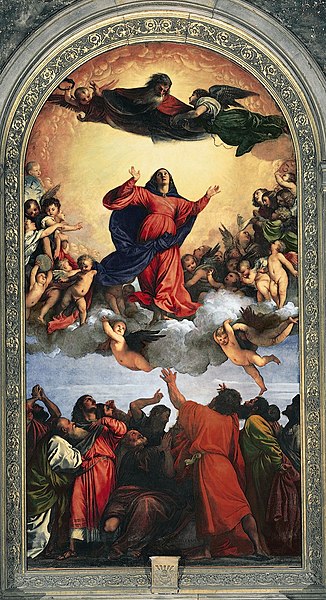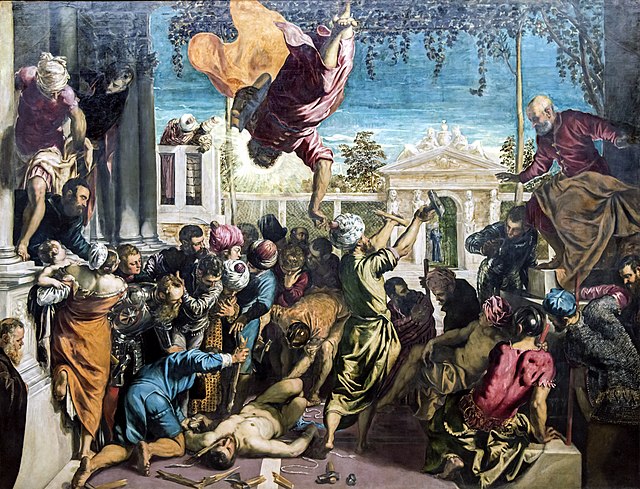A lake pigment is a pigment made by precipitating a dye with an inert binder, or mordant, usually a metallic salt. Unlike vermilion, ultramarine, and other pigments made from ground minerals, lake pigments are organic. Manufacturers and suppliers to artists and industry frequently omit the lake designation in the name. Many lake pigments are fugitive because the dyes involved are not lightfast. Red lakes were particularly important in Renaissance and Baroque paintings; they were often used as translucent glazes to portray the colors of rich fabrics and draperies.
Titian used glazes of red lake to create the vivid crimson of the robes in The Vendramin Family Venerating a Relic of the True Cross, c. 1550–60 (detail).
A pigment is a powder used to add color or change visual appearance. Pigments are completely or nearly insoluble and chemically unreactive in water or another medium; in contrast, dyes are colored substances which are soluble or go into solution at some stage in their use. Dyes are often organic compounds whereas pigments are often inorganic. Pigments of prehistoric and historic value include ochre, charcoal, and lapis lazuli.
Pigments for sale at a market stall in Goa, India
The Milkmaid by Johannes Vermeer (c. 1658). Vermeer was lavish in his choice of expensive pigments, including lead-tin yellow, natural ultramarine, and madder lake, as shown in the vibrant painting.
Titian used the historic pigment vermilion to create the reds in the oil painting of Assunta, completed c. 1518.
Miracle of the Slave by Tintoretto (c. 1548). The son of a master dyer, Tintoretto used Carmine Red Lake pigment, derived from the cochineal insect, to achieve dramatic color effects.





